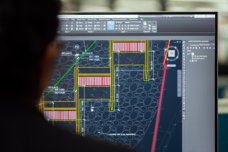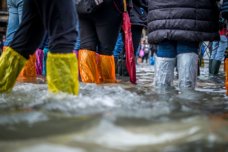In this article, we’ll describe 6 benefits of using drones for civil infrastructure inspections.
Safety
Civil infrastructure inspections often expose humans to risks, particularly in difficult-to-reach sites such as bridges, dams or wind turbines. Drones can reach these places and collect images, allowing inspectors to derive information from them without endangering their own lives.
Speed
Drone inspections are fast compared to human inspections, allowing them to cover more regions in less time. For infrastructures that require regular inspections for detecting possible problems and guaranteeing public safety – such as bridges, dams, roads, tunnels, airports, and wastewater infrastructure – this can save time and money.
Cost
Using drones for infrastructure inspections may be less expensive than traditional inspection methods. These traditional methods – such as the use of cranes or scaffolding – may be required for inspecting major infrastructure like bridges or wind turbines. These can be time-consuming and costly. Drones, by comparison, use less expensive equipment, fewer workers and can cover more objects in less time. Inspectors can visit hard-to-reach portions of infrastructure at a much lower total inspection cost and minimize damage to the surrounding region.
Real-Time
Drones can collect real-time data, allowing inspectors to discover possible failures and make judgments more swiftly. This can help prevent accidents or infrastructure failures and ensure that repairs are completed as soon as possible. For example, a drone may collect real-time data on a bridge's displacement, vibrations, and other characteristics, allowing inspectors to discover possible faults in real-time. To communicate data in real time, the drone must be equipped with dependable, high-speed communication technology.
Accuracy
Drones can take high-resolution images and videos, enabling more precise and thorough inspections. For example, a drone may collect detailed images of bridge decks, allowing inspectors to discover cracks, corrosion, and other indicators of wear that may not be obvious from the ground. Or high-resolution images of wind turbine blades can allow inspectors to discover damage caused by bird strikes or lightning strikes (see figure below).
Drone photogrammetry techniques also ensure higher positioning accuracy. For example, when inspecting pipelines, drones may utilize GPS to precisely find and inspect specific parts of the pipeline, assisting in the early detection of possible problems such as leaks or corrosion. The positional accuracy required for inspections will depend on the individual application as well as the size and complexity of the infrastructure being assessed. In certain circumstances, a few centimeters of precision may be acceptable, but in others, higher degrees of accuracy may be necessary.
https://www.windsystemsmag.com/preventing-lightning-damage-to-turbines/
Non-Invasive
Drones may take data without interfering with routine operations or causing harm to infrastructure. This is especially important for certain infrastructures like bridges, where inspections using traditional approaches may require lane closures or other interruptions. Drones can capture high-resolution data from a safe distance, eliminating the need for lane closures or other disruptions. This can help to reduce traffic delays and the impact on local communities. Furthermore, deploying drones for inspections can minimize the danger of infrastructure damage caused by traditional inspection methods, such as the use of heavy equipment or intrusive techniques that might compromise the safety of the structure.
You can find more about the use cases of drones on the UAV center website https://www.itc.nl/research/research-facilities/labs-resources/uav-centre/






